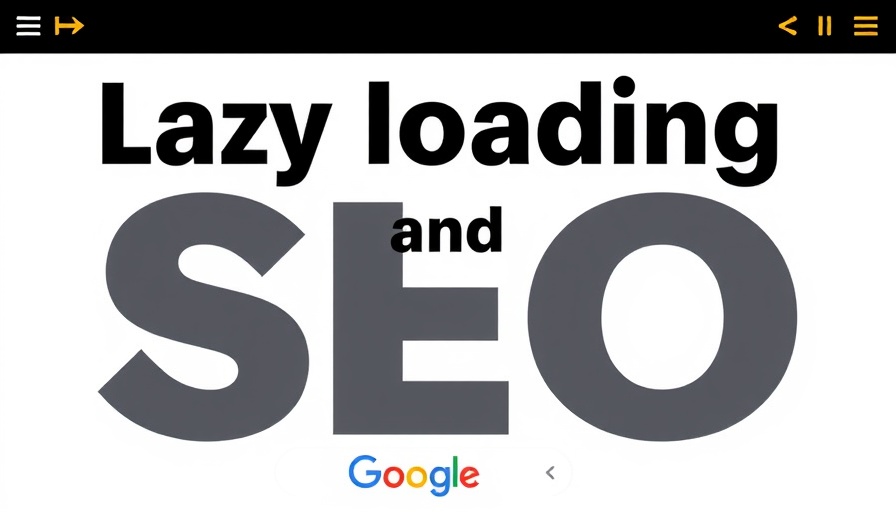
Understanding Lazy Loading and Its Impact on Your Website
As a small business owner navigating the digital landscape, it’s crucial to understand how technical aspects of your website can affect user experience and business outcomes. The debate over lazy loading—an optimization technique that defers loading images and other non-essential resources until they are needed—has gained traction recently. While it can enhance perceived performance on some sites, it may ironically delay the Largest Contentful Paint (LCP), a critical metric in Google’s Core Web Vitals, negatively impacting your small business’s online visibility.
What Is Largest Contentful Paint (LCP)?
LCP measures the time taken for the largest image or text block in the visible viewport to show up. This metric is pivotal in the overall user experience, as a delayed LCP can frustrate visitors and increase bounce rates. Google considers LCP a significant factor in ranking websites, thereby directly influencing your digital marketing strategy and, ultimately, your business growth.
The Risks of Default Lazy Loading on Above-the-Fold Content
Google’s Martin Splitt emphasizes the importance of how and where lazy loading is utilized. Relying on default settings that lazy-load all images, particularly those above the fold (the first visible area of a webpage), can hinder LCP performance. According to Splitt, overriding the browser’s intelligence by lazy loading images that should be prioritized can result in users waiting longer for visible content—leading to jarring experiences and a subsequent decrease in customer satisfaction.
Best Practices for Lazy Loading
To mitigate the risks associated with lazy loading, consider the following strategies:
- Prioritize Above-the-Fold Content: Ensure that images and text critical to user engagement are prioritized outside of lazy loading.
- Utilize Native Loading Attributes: Take advantage of built-in loading attributes for images and iframes, which allow browsers to handle lazy loading efficiently.
- Conduct Regular Audits: Use tools like Google Search Console to inspect rendered HTML, ensuring images are not obscured behind non-standard attributes that prevent indexing.
Enhancing Your Digital Marketing Strategy
Optimizing your website isn’t just about loading speeds; it’s about enhancing the entire user experience. For small to medium-sized businesses looking to grow their digital footprint, every element matters. By improving LCP and overall site speed, you boost not only your SEO rankings but also customer retention. Happy customers are more likely to return, fostering brand loyalty.
Why Understanding Technical SEO Matters
For ambitious entrepreneurs, understanding the intricacies of technical SEO—it’s not just about rankings; it's vital for customer satisfaction, engagement, and conversion rates. By integrating efficient lazy-loading practices with your content strategy and overall digital marketing strategy, your business can thrive in a competitive environment. Your investment in fostering an efficient online presence can equal significant returns, from enhanced brand awareness to increased client acquisition rates.
Bringing It All Together
The world of online marketing is constantly evolving, and keeping pace with best practices in areas like lazy loading can significantly impact your small business’s success. Implementing strategic website optimizations can lead to a better user experience, higher search engine rankings, and ultimately, increased revenue. Assess your current practices today to ensure they align with your business goals.
For in-depth insights and further information on optimizing your website, be sure to explore additional resources on digital marketing tools, content marketing strategies, and local SEO tips that can help develop your brand within your community.
 Add Row
Add Row  Add
Add 




Write A Comment